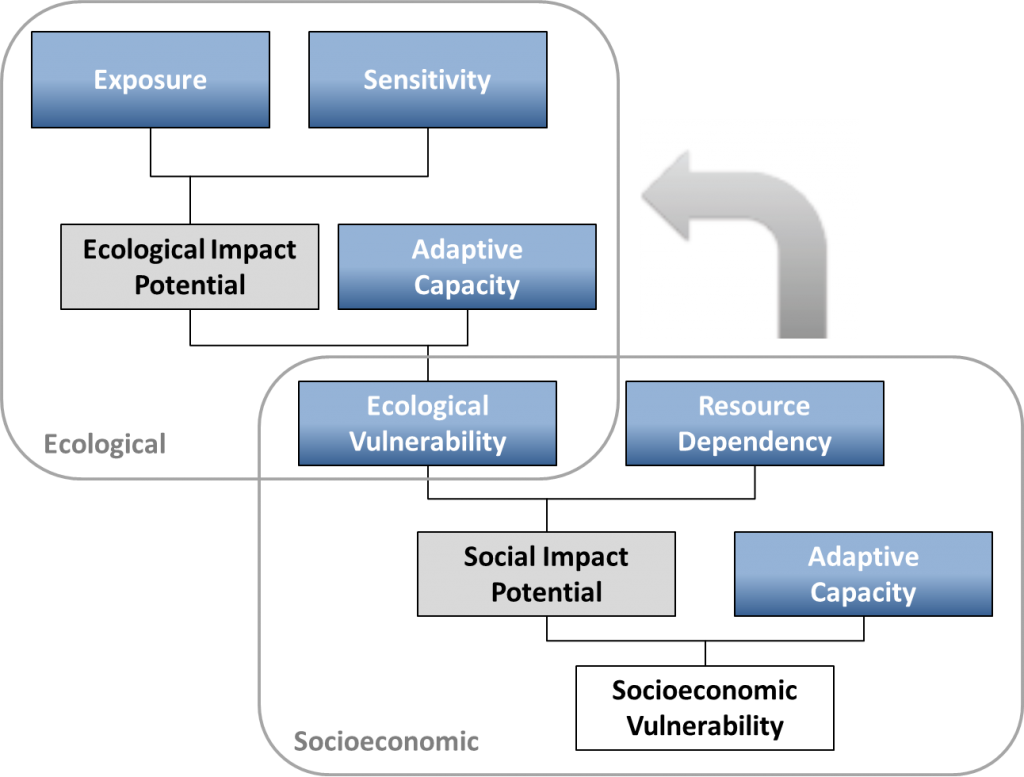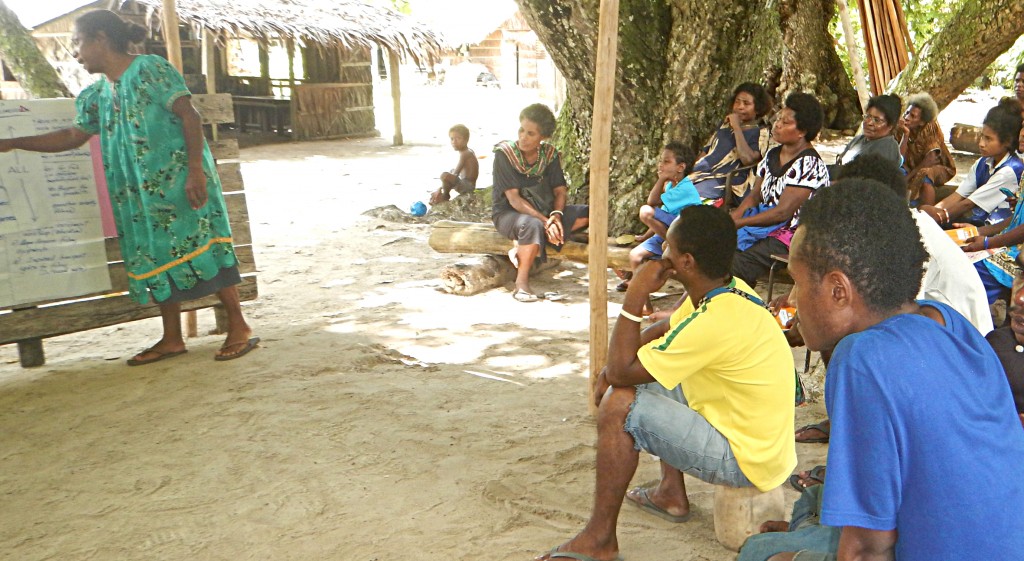Vulnerability Assessments
Vulnerability assessments are useful tools for understanding the effects of climate change on natural systems and human communities. They provide guidance for making informed choices about setting or revising conservation and development priorities and making management decisions.
Vulnerability assessments often address three key components of vulnerability: exposure, sensitivity, and adaptive capacity. ref
Exposure – rate and magnitude of climate change, variability, and hazard that a system experiences (e.g., magnitude, frequency, or duration of a coral bleaching event or an extreme weather event, such as a typhoon)
Sensitivity – degree to which a system is affected by changes in climate conditions or natural hazards
Adaptive capacity – ability of a system to cope with or adapt to change including environmental impacts or policy changes
While exposure is driven by climate conditions and hazards, sensitivity and adaptive capacity are influenced by economic, political, cultural and institutional factors. The graphic below shows the components of vulnerability and highlights the linkages between ecosystems and communities. ref

Vulnerability graphic showing co-dependency of ecological and social systems (modified from Marshall et al. 2009).
Why Assess Vulnerability?
Vulnerability assessments provide two essential types of information needed for conservation planning: 1) Identifying which species, systems, or other conservation targets are likely to be vulnerable; and 2) Understanding why they are vulnerable.
Vulnerability assessments can help to:
- Prioritize species or ecosystems for management actions
- Efficiently allocate conservation resources
- Identify actions that reduce negative impacts of climate change on people and ecosystems

A women’s group representative discusses ways to include concerns from the disabled/marginalized into adaptation planning. Photo © TNC
Questions to Think About Before Initiating a Vulnerability Assessment ref
- What is the purpose of the assessment? Is it to inform conservation strategies, policymaking, or to raise awareness (education)?
- Who will use the information developed from the vulnerability assessment? And for what purpose?
- Are there specific targets (e.g., coral reefs, agriculture, homes and infrastructure) or geographic areas (e.g., the entire municipality, an MPA) we want to assess?
- What timescale and outputs are needed to drive a management or policy decision?
- Are there places (areas) or certain communities that may be particularly vulnerable and thus priorities for an assessment?
